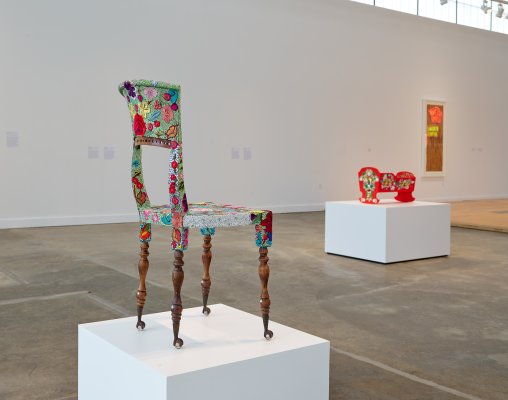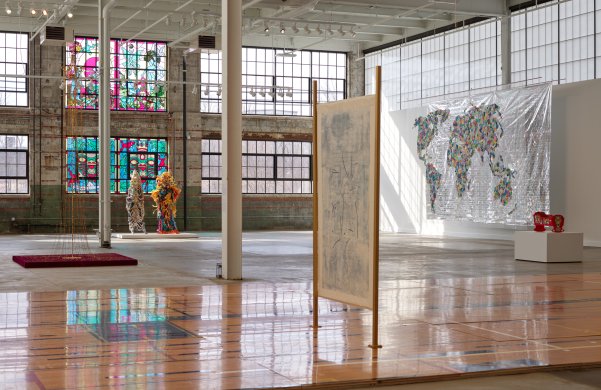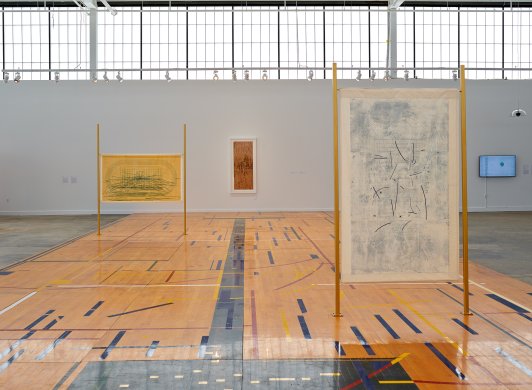During Hispanic Heritage Month, we are highlighting artists recently featured in Comunidades Visibles: The Materiality of Migration, which was on view at Albright-Knox Northland February 12–May 16, 2021. The exhibition brought together artworks by first- or second-generation immigrant Latinx artists whose creative practices celebrate their communities and convey urgent stories about historical and contemporary immigration. Today we focus on Colombia-born/New York City–based artist Esperanza Cortés.
Esperanza Cortés’s Embroidered Allegories series began in December 2014 after an injury from a bus accident prevented her from dancing. Cortés had been an instructor of Afro-Latin dance in New York City and internationally for over twenty years, but dance also formed a core component of her identity since childhood. The dances and music she had learned when young were part of a repertoire of culture, born from difficult histories and passed down sometimes over centuries.
While recovering from her injury Cortés began to cut the embroidery from the outfits she wore in dance. In Cradle, 2019–20, made for this exhibition, and La Cordobésa, 2016–17, Cortés adorns historical furniture with the textiles of her personal life and cultural inheritance. La Cordobésa, Cortés states, is inspired by her maternal family, three generations of which have been bullfighters in Colombia, where Cortés was born, with her cousin being one of the first women to take on that role.
The empty Cradle, on the other hand, reminds us of the humanitarian crisis at the Southern border of the United States, specifically the more than 5,000 children separated from their parents there since July 2017. Cortés covers the cradle with glass beads as a form of protection, but these same beads, together with the ornate floral embroidery, also reference the production of precious stones as extracted from the environment: a complex colonial project that has shaped the Americas into the present day.
This history is also laid bare in Cortés’s Empire, which features gold chains cascading down from a gold chandelier that hangs nearly twenty feet above a red velvet platform. Gold was one of the resources most closely associated with colonization. Drawn from Latin America to support the Spanish empire, the mining of precious metals like gold devastated the economic potential of Latin America and continues to affect the region to this day.
As is the case for all of the artists in Comunidades Visibles, the choice of materials made here is deliberate: revealing the movement of history in the intimately personal. Likewise, it is work that asks us to think about the nuances of identity, as Corés states, “Historically, Latinas have been lumped under a title that’s so vast. I come from a family that includes Sephardic Jews, an opera singer father, a female matador (bull-fighter), and a former Afro-Latin dancer now visual artist, me: Esperanza Cortés.”
Watch Cortés in conversation with Assistant Curator Andrea Alvarez on Instagram Live from Albright-Knox Northland in spring 2021.



